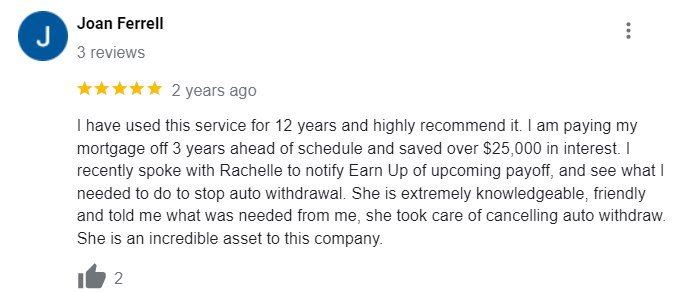People often search online for “personal finance guidance” because they’re looking for a roadmap to financial well-being. But let’s be honest, sometimes it feels like the world of finance is speaking a different language. With terms like “compound interest,” “asset allocation,” and “debt-to-income ratio” swirling around, it’s easy to feel overwhelmed. This is where smart personal finance guidance comes in to simplify those concepts and provide clear steps for managing your money effectively.
The Building Blocks of Personal Finance
Solid personal finance guidance rests on five foundational pillars. These areas, when managed properly, set the stage for achieving financial goals and reducing stress over money matters. Let’s explore each of these building blocks:
1. Income
It may seem obvious, but income is the lifeblood of personal finance. It’s where everything starts, so maximizing it sets a good foundation for financial security. While it’s smart to keep a close eye on spending, finding ways to increase your income has a huge impact. This could involve negotiating a raise at your current job, taking on a side hustle, or developing new skills that could lead to higher-paying opportunities.
This isn’t always easy, though – sometimes life gets in the way. According to the 2023 Charles Schwab Modern Wealth Survey, respondents listed job loss as their most frequent large, unexpected expense in 2023. It’s best to be prepared, and having multiple income streams can be a safety net in that situation. Opening a high-yield savings account is one way to ensure your money is working for you while you save.
2. Spending
Managing spending doesn’t have to mean cutting out all the fun. It’s more about taking control and understanding where your money goes. You can create a detailed budget, categorize your expenses, and identify areas where you can cut back.
There are popular frameworks for budgeting, such as the 50/30/20 rule. This rule suggests allocating 50% of after-tax income to essentials (like rent, utilities, groceries, and transportation). 30% goes towards personal wants, and 20% is for savings and debt repayment. Consider using a credit card for purchases to earn rewards and manage your cash flow better, but make sure to pay your balance in full each month to avoid interest charges.
3. Savings
Having a solid savings strategy provides peace of mind and a safety net. Think of it as your backup for rainy days (or a massive unexpected expense). It can also help you achieve your short-term and long-term financial goals. A common strategy is to start with an emergency fund – three to six months’ worth of living expenses saved up.
Having this money set aside means that unexpected costs won’t send your finances spiraling. There are many different savings accounts available; consider a high-yield savings account or a money market account to earn a higher interest rate on your deposits. Some people find it helpful to set up automatic transfers from their checking account to their savings account each month to make saving easier.
4. Investing
When it comes to personal finance guidance, many people find the idea of investing daunting. However, with the right research, you can start your investing journey. Start by defining clear financial goals and setting realistic expectations. Once you’ve done that, you’ll be ready to understand various asset classes and diversify investments accordingly.
Diversifying across different types of assets (such as stocks, bonds, and real estate) helps spread risk. This diversification increases the likelihood of reaching those financial targets. There are vast differences in risk and reward between different investments, and many people find that seeking help from a financial advisor can simplify this step. For long-term goals like retirement, you can consider opening a Roth IRA or a traditional IRA to save for retirement in a tax-advantaged way.
5. Protection
It’s wise to be prepared for life’s twists and turns by thinking about risk management through financial products. Protection products like life insurance, health insurance, and estate planning help protect you from unexpected hardships. Life insurance can provide financial support for your loved ones in case of your passing.
Health insurance can help cover the costs of medical expenses. Estate planning ensures your assets are distributed according to your wishes. It is essential to carefully assess your needs and risk tolerance before deciding on coverage amounts for each type of protection. Don’t be afraid to shop around and compare quotes from different insurance providers to find the best rates.
Key Principles to Remember
Remember to manage your cash flow carefully. There is a direct correlation between positive mental well-being and financial success. To manage your personal finance journey well, use sound strategies that consider the interconnected nature of these pillars.
Building positive money habits starts with personal discipline, self-awareness, and consistent action. Seek knowledge about managing your money, understand investment strategies, and plan for unexpected expenses. Prioritize long-term financial stability over short-term gratification. This approach can lead to reduced financial stress and greater financial freedom over time. Consider consulting with a fee-only financial planner who can provide unbiased advice.
Create a budget
Not exactly a sexy topic. Agreed. But, creating a budget happens to be the one step that makes every other financial goal reachable. Think of it as the financial equivalent of eating your vegetables – not always the most exciting, but essential for a healthy financial life.
A budget is essentially a spending plan that tracks your income and expenses. It’s a roadmap to help you manage your money effectively, reach your financial goals, and avoid overspending. The beauty of a budget is its flexibility – you can tailor it to fit your unique financial situation and goals.
Why You Need a Budget
Here are some compelling reasons why you should create and stick to a budget:
- Track Your Spending: A budget provides a clear picture of where your money is going. By tracking your income and expenses, you’ll quickly identify areas where you might be overspending and can make adjustments accordingly.
- Achieve Your Financial Goals: Whether it’s saving for a down payment on a house, paying off debt, or investing for retirement, a budget helps you allocate your money strategically to reach your goals faster.
- Reduce Financial Stress: Knowing where your money is going and having a plan in place can significantly reduce financial stress. It provides a sense of control and security over your finances.
Remember, a budget is not about restricting your spending; it’s about making informed financial decisions that align with your values and priorities. Ready to take control of your finances? Let’s explore different budgeting methods to find the one that suits you best.
Build an Emergency Fund
Life throws financial curveballs. It’s not a matter of “if” but “when.” A sudden job loss, unexpected medical bills, or urgent car repairs can derail your finances if you’re not prepared. That’s why building a solid emergency fund is crucial for your financial well-being.
What is an Emergency Fund?
An emergency fund is a separate savings account specifically designated to cover unexpected expenses. It acts as a financial safety net, providing peace of mind and preventing you from going into debt when life throws you a curveball.
How Much Should You Save?
Experts recommend having three to six months’ worth of living expenses in your emergency fund. This ensures you can cover essential costs like rent or mortgage payments, utilities, groceries, and transportation for an extended period if your income is disrupted.
Tips for Building Your Emergency Fund
- Set a Savings Goal: Determine a target amount for your emergency fund and break it down into smaller, manageable monthly savings goals.
- Automate Your Savings: Set up automatic transfers from your checking account to your emergency fund each month. This makes saving effortless and consistent.
- Choose the Right Account: Consider opening a high-yield savings account to maximize your interest earnings.
- Cut Back on Expenses: Identify areas where you can reduce spending and redirect those funds towards your emergency fund.
- Find Additional Income Streams: Explore opportunities to boost your income, such as a side hustle or freelance work, and allocate a portion of your earnings to your emergency savings.
Pay Off Costly Credit Card Debt
Carrying a balance on your credit card can feel like you’re dragging around a ball and chain. That’s because high credit card interest rates can make it feel impossible to get ahead. Making only the minimum payment each month can keep you in debt for years and cost you thousands of dollars in interest charges.
Prioritizing paying down your credit card debt is a key factor in improving your credit score, and reducing how much interest you pay over the life of your debt. It’s a great way to improve your overall financial literacy and put yourself on the path to financial freedom.
Consider these tips to help you manage your credit card debt:
- Create a budget: The first step in managing credit card debt is to create a realistic budget that tracks income and expenses. Identify areas where you can cut back on spending. The money you free up can be used to make more than the minimum payment on your credit card debt.
- Focus on high-interest debt: Make a list of all your debts, including interest rates. Target the debt with the highest interest rate first while making minimum payments on other debts.
- Consider a balance transfer: If you have a good credit score, you may qualify for a balance transfer credit card with a low or 0% introductory interest rate. Transferring your balance could save you money on interest and help you pay off your debt faster.
- Explore debt consolidation & beyond: Are you struggling with multiple debts? Consider exploring debt consolidation and other debt repayment programs to take control of your finances. Debt consolidation involves taking out a new loan to pay off existing higher-interest debts. Flexible debt repayment platforms help you analyze your debts and create a personalized payment plan, optimize your payment schedule to pay off high-interest debts first, and provide personalized recommendations to help you stay on track.
FAQs about Personal Finance Guidance
What are the 5 main areas of personal finance?
The 5 main areas of personal finance guidance include income, spending, saving, investing, and protection. Understanding and managing each of these is crucial for reaching your financial goals and building overall security.
How can I teach myself personal finance?
Many people find learning about personal finance overwhelming because it’s not something that is typically taught in school. You don’t need a finance degree to become a savvy money manager. There are countless free online resources available that cover a variety of financial topics, like this website you’re on right now.
You can find articles, blogs, and educational platforms covering everything from budgeting and debt management to investing and retirement planning. Check out our other blog posts for more financial guidance. You can also find plenty of free resources available on reputable financial websites and online platforms that provide articles about finances and offer other financial advice.
What is the 30 30 30 rule personal finance?
While there isn’t a formally recognized 30 30 30 rule in personal finance guidance, you can make one. You could allocate funds across various categories: 30% to housing, 30% to needs like groceries and bills, and 30% to other expenses or savings goals. The important part is to set up your own framework for allocating money, using percentages to create simple targets for your finances.
What is the 20 30 50 rule personal finance?
The 20 30 50 rule is a budget plan to help you manage your cash flow. In this budgeting strategy, 50% of your after-tax income goes toward essentials like rent, mortgage payments, and bills. 30% of your income is for personal spending like dining out and hobbies, and 20% is used for financial goals such as savings or paying down debt like student loan debt.
The goal is to help ensure you’re prioritizing your essential needs, allocating funds for personal enjoyment, and making progress toward your financial goals. It’s a simple and flexible approach to budgeting that can be adapted to different income levels and financial situations.
Conclusion
Sound personal finance guidance is an ongoing journey that starts with understanding your current financial picture and setting realistic expectations for the future. Take ownership of your finances and commit to proactive learning and regular review to adjust your plan as life happens.
The information in this article and on this website is meant to serve as a starting point on your path to achieving financial stability. Finding the right plan and tools will put you well on your way. But remember, personal finance is truly personal. What works best for one person may not be the right fit for another. It’s important to find a system that aligns with your values, goals, and lifestyle.










